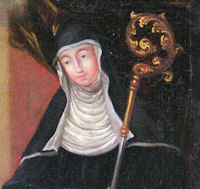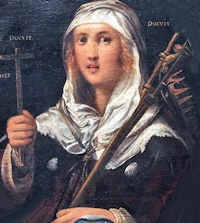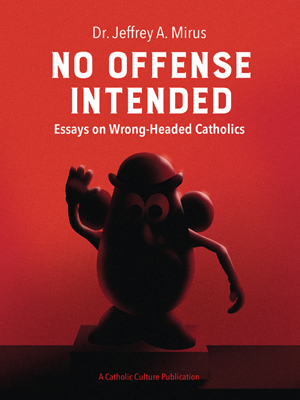Make your gift today!
Help keep Catholics around the world educated and informed.
Already donated? Log in to stop seeing these donation pop-ups.
Ordinary Time: February 25th
Saturday of the Seventh Week of Ordinary Time
Other Commemorations: St. Walburga, Abbess (RM)
» Enjoy our Liturgical Seasons series of e-books!
And people were bringing children to him that he might touch them, but the disciples rebuked them. When Jesus saw this he became indignant and said to them, "Let the children come to me; do not prevent them, for the kingdom of God belongs to such as these. Amen, I say to you, whoever does not accept the kingdom of God like a child will not enter it." Then he embraced them and blessed them, placing his hands on them (Mark 10:13-16).
God's Plan for Marriage Is Condition for True Freedom
From the beginning! Only he, Jesus, knows the Father "from the beginning" and also knows man "from the beginning". He both reveals the Father and reveals man to himself (cf. Gaudium et spes, n. 22). For this reason, following in his footsteps, the Church has the task of bearing witness in history to this original plan and of showing its truth and feasibility.
In doing so she does not hide the difficulties and tragedies which concrete historical experience records in the life of families. But she also knows that God's will, wholeheartedly accepted and fulfilled, is not a chain that enslaves, but the condition for a true freedom which achieves its fullness in love. The Church also knows — and our daily experience confirms it — that when this original plan is obscured in consciences, incalculable harm is done to society.
Certainly, there are difficulties. But Jesus provided married couples with sufficient means of grace to overcome them. By his will marriage has acquired, in the baptized, the value and power of a sacramental sign, which strengthens its characteristics and prerogatives. For in sacramental marriage the spouses — as the young couples whose marriages I will bless will shortly be doing — commit themselves to expressing to each other and to bearing witness before the world to the powerful and indissoluble love with which Christ loves the Church. It is a "great mystery", as the Apostle Paul calls it (cf. Eph 5:32).
"May the Lord, the source of life, bless you!" God's blessing is at the origin not only of marital communion, but also of a responsible and generous openness to life. Children really are the "springtime of the family and society", as the motto of your Jubilee says. It is in children that marriage blossoms: they crown that total partnership of life ("totius vitae consortium": CIC, can. 1055, 1), which makes husband and wife "one flesh"; this is true both of the children born from the natural relationship of the spouses and those desired through adoption. Children are not an "accessory" to the project of married life. They are not an "option", but a "supreme gift" (Gaudium et spes, n. 50), inscribed in the very structure of the conjugal union. The Church, as you know, teaches an ethic of respect for this fundamental structure in both its unitive and procreative meaning. In all this, it expresses the proper regard for God's plan, sketching an image of conjugal relations that are marked by mutual and unreserved acceptance. Above all, it addresses the right of children to be born and to grow in a context of fully human love. In conforming to the word of God, families thus become a school of humanization and true solidarity.
Excerpted from Children Are Supreme Gift of Married Life, Pope John Paul II, October 15, 2000.
St. Walburga
St. Walburga was born around 710. She is the daughter of St. Richard and the niece of St. Boniface. When St. Richard set out for a pilgrimage to the Holy Land with his sons, Ss. Willibald & Winibald, he entrusted 11 year old Walburga to the monastery school at Wimborne. She remained as a nun, spending a total of 26 years there.
 When St. Boniface put out an appeal for nuns to help him in the evangelization of Germany, St. Walburga answered the call. On the way to Germany, there was a terrible storm at sea. Walburga knelt on the deck of the ship and prayed. The sea immediately became calm. Some sailors witnessed this and spread the word that she was a wonderworker, so she was received in Germany with great respect.
When St. Boniface put out an appeal for nuns to help him in the evangelization of Germany, St. Walburga answered the call. On the way to Germany, there was a terrible storm at sea. Walburga knelt on the deck of the ship and prayed. The sea immediately became calm. Some sailors witnessed this and spread the word that she was a wonderworker, so she was received in Germany with great respect.
At first, she lived at Bischofsheim, under the rule of St. Lioba. Then she was made abbess at Heidenheim, near to where her brother, Winibald served as an abbot over a men's monastery. After his death, she ruled both monasteries. She worked many miracles in the course of her ministry. She wrote a biography of her brother, Winibald, and of Willibald's travels in Palestine, in Latin. She is regarded as the first woman author in both England and Germany.
On September 23, 776, she assisted Willibald in translating the uncorrupt relics of their brother, Winibald, to a new tomb in the church at Heidenheim. Shortly after this, she fell ill. Willibald cared for her until she died on February 25, 777, then placed her next to Winibald in the tomb.
After St. Willibald's death in 786, people gradually forgot St. Walburga and the church fell into disrepair. In 870, Bishop Oktar was having Heidenheim restored. Some workmen desecrated Walburga's grave. She appeared in a dream to the bishop, who then translated her relics to Eichstadt. In 893, St. Walburga's body was found to be immersed in a mysterious sweet-smelling liquid. It was found to work miraculous healings. The liquid, called St. Walburga's oil, has flowed from her body, ever since, except for a brief period when the church was put under the interdict after robbers shed the blood of a bell-ringer in the church. Portions of St. Walburga's relics have taken to several other cities and her oil to all parts of the world.
Patronage: against coughs; against dog bites; against famine; against hydrophobia; against mad dogs; against plague; against rabies; against storms; boatmen; farmers; harvests; mariners; sailors; watermen; diocese of Eichstätt, Germany; diocese of Plymouth, England; Antwerp, Belgium; Gronigen, Netherlands; Oudenarde, Belgium; Zutphen, Netherlands
Symbols and Representation: abbess holding three ears of corn; abbess with angels holding a crown over her; abbess within a family tree of the kings of England; crown; near her own tomb as it exudes its miraculous oil
phial of oil; royal abbess with a small flask of oil on a book; scepter; three ears of corn; with Saint Willibald and Saint Winebald
Highlights and Things to Do:
- Eliminating Confusion: The night of 1 May, the date of the translation of Walburga’s relics to Eichstatt in 870, is known as Walpurgisnacht (or St. Walburga's Eve); it is also a pagan festival marking the beginning of summer and the revels of witches. Though the saint had no connection with this festival, her name became associated with witchcraft and country superstitions because of the date. It is possible that the protection of crops ascribed to her, represented by three ears of corn in her icons, may have been transferred to her from Mother Earth and the connection to this pagan holiday. (From CatholicSaints.Info).
- Read more about St. Walburga:
- Visit online two of the American abbeys dedicated to St. Walburga: in Northern Colorado and St. Emma Monastery in Greensburg, Pennsylvania.
- Read more about the Oil of St. Walburga. This is the church in Eichstädt in Bavaria, Germany where her body and the oil is found.






